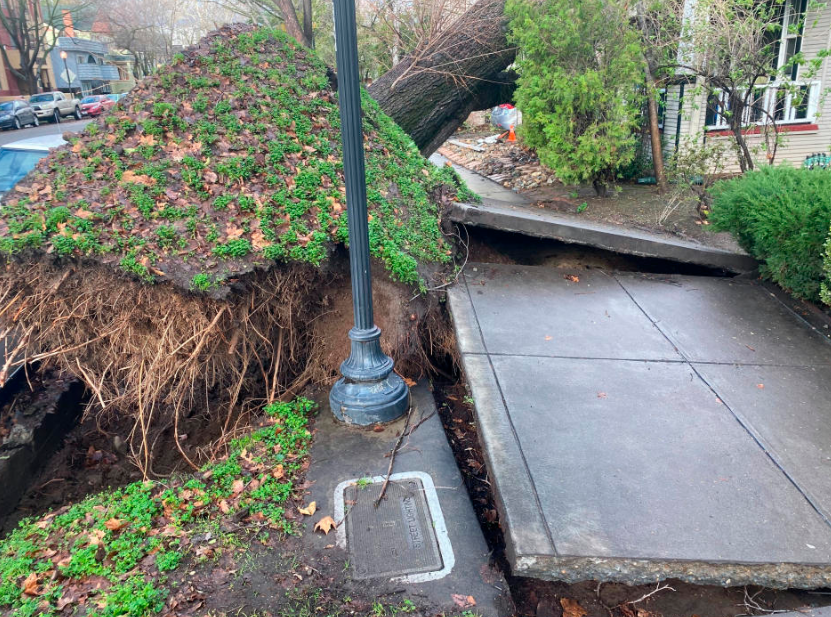- Open 24/7

Trees are no doubt the shelter of our house. We admire them for their beauty, and the environmental benefits they bring to us. But do you know the hidden danger lurking beneath the surface behind these flourishing greens? It is their roots. These roots have extensively established themselves in the soil and require water and nutrients. However, their spread can disrupt soil stability, crack concrete, and even shift structural foundations. These signs cannot be observed until the damage is severe. So, if you see any jagged tiles in your outdoor sanctuaries or some cracks in the concrete, know that it can be a tree root intrusion. But don’t worry! This guide is all about the necessary information about how you can get rid of such dangers, which can turn into costly nightmares!
Tree roots are in a search of moisture, oxygen, and nutrients. These roots establish themselves in the top 12 to 24 inches of soil, unlike what people usually think, that they grow deep underground. If a tree is planted near a building or sidewalks, it pushes the concrete and expands. Especially, if there is a water source near its vicinity, they move towards it and crack concrete, resultantly widening them over time.
The spread of these root systems varies from tree to tree. Some of the species have particularly aggressive root systems, due to which they spread rapidly and cause severe damage to pavements and buildings.
Tree roots not only cause structural damage to your property but also result in financial losses. Root systems exert a significant amount of pressure in the soil. But if they are confined by a pavement they have nowhere to extend but upward. Beneath the pavement, the roots grow and disrupt the soil. This leads to uneven concrete surfaces, cracks, and lifts up the pavement. A tiny crack in the concrete allows the root to seep through and cause severe damage. As the roots expand, they exert pressure and force the slab to break open.
Homeowners have to face extensive repair costs due to damage on the sidewalks. Not only this, but also damaged sidewalks become a trip hazard for the residents around it. This makes it liable for the property owners to repair these eyesores to remove the functionality of their spaces.
Overall, the risk of sidewalk damage depends on the following factors:
Intrusive roots do not only damage our sidewalk but also our building’s foundation. If they are not noticed in time, they can cause cracks and compromise the stability of our properties. Tree roots tend to break through concrete foundations to disrupt the soil balance. Soil movement is one of the dangerous issues that threaten our buildings.
These signs indicate that tree roots are causing the potential problem. Avoid major repairs that cost hundreds of dollars by addressing them timely.
Every tree is different from the other. Some are compact and pose a moderate risk while others have extensive root systems that threaten to compromise the structural stability of your buildings. This makes us wonder about the most problematic trees that could harm our structures. Check out the list below:
Some trees are safer to plant near sidewalks and buildings. These include:
One of the most effective ways is to choose the right tree to prevent damage. So whenever you are planting near a structure, select a tree that has an invasive root system.
Prevent tree root damage from happening in the first place. To do this, one must actively plan and plant trees carefully.
Planting trees at a safe distance is a critical procedure. Plant at least 15–20 feet away from pavement and building if your tree has an invasive root system. Use a root barrier if you are planting near a sidewalk. This helps to prevent the roots from spreading under the pavement, thereby controlling its direction.
Opt for physical defense against root intrusion by installing a root barrier. Place them vertically in the soil at the time of planting. They can mitigate the damage by forcing the roots to grow downward instead of outward.
Another key strategy is to keep the soil moisture consistent. Soils expand and contract, exacerbating root pressure on sidewalks and foundations.
A balanced irrigation system is the perfect option to regulate it as dry soil, which causes the soil to reach further in search of water, whereas overly wet soils damage infrastructures.
Repair options depend on the extent of the problem once damage has occurred. For sidewalk damage, consider the following:
Repairs for foundation damage can be more complicated and costly. Approaches include:
In extreme situations, a tree removal may be necessary to remove the tree. However, consider this when no other solution works out for you. Prune your trees regularly and install a barrier to prevent tree removals.
Tree roots are a powerful and often underestimated force. They feed trees, but may also harm sidewalks, driveways, and building foundations. Knowing why and how roots cause damage is important. Choosing the right trees, using root barriers, and managing soil moisture can lower the risk. It is wise to act early before damage occurs. If you see signs of root damage, talk to an arborist or foundation specialist at Tree Cutting BX. We can help save you thousands.
We provide professional, safe, and affordable tree services tailored to your needs. Our experienced team ensures top-quality results with the latest equipment and techniques.
Connect with us
Copyright ©2025 Tree Cutting Bx. All Rights Reserved. Designed By Superior Tech Solutions.